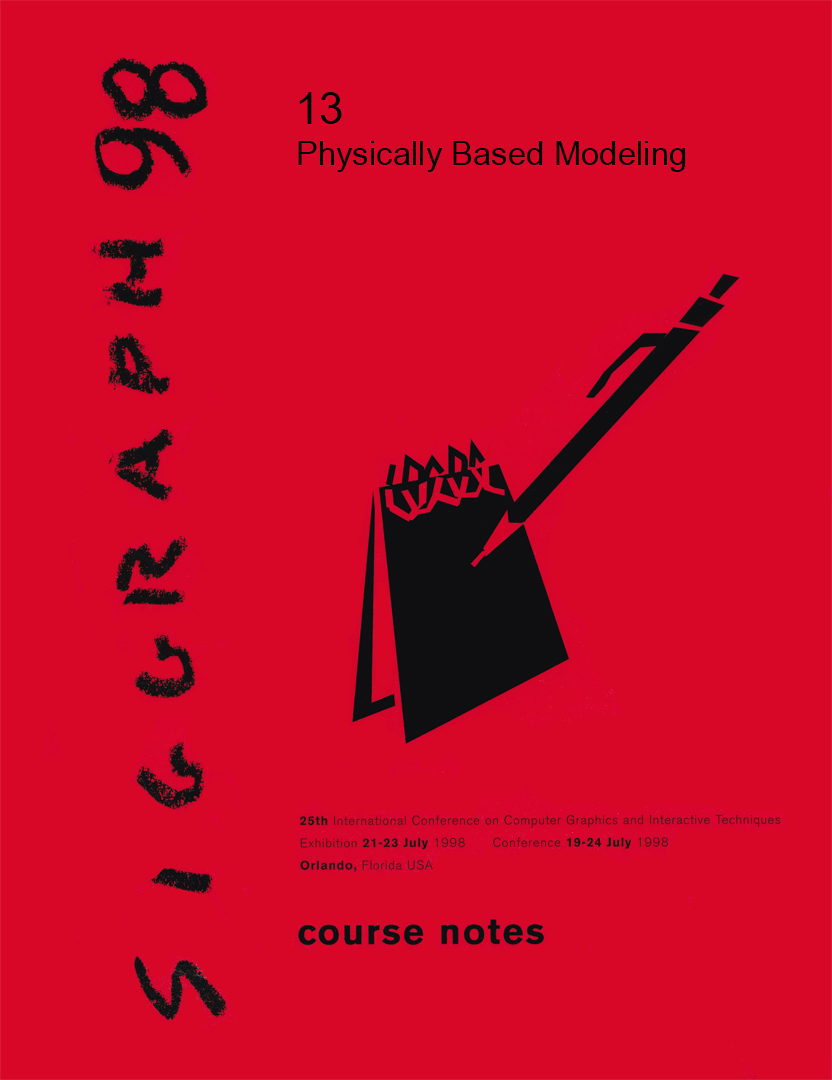“Physically Based Modeling” by Baraff and Witkin
Conference:
Type(s):
Title:
- Physically Based Modeling
Course Organizer(s):
Presenter(s)/Author(s):
Abstract:
Prerequisites
A working familiarity with mainstream computer graphics modeling and animation. In addition to the usual graphics math skills, such as matrix-vector manipulations, attendees should have had a basic calculus course.
Topics Covered
Modeling the dynamics of particle systems and rigid bodies, basic numerical methods for differential equations, simulation of deformable surfaces, collision detection, modeling springs, energy functions, hard constraints, and collision and contact between objects.
Description
Physically based modeling has become an important new approach to computer animation and computer graphics modeling. This course was of particular interest to those who wish to implement physically based modeling techniques and/or to read and critically appraise technical papers in the area. Bolstered by extensive course notes, the student with good basic implementation skills should be able to implement the techniques presented, not by rote, but confidently and with understanding. Course presentations favored visual, spatial explanations (including numerous examples on video) over formal symbol manipulation wherever feasible.
Contributed By:
- Mary Whitton
Location:
- Charles Babbage Institute Archives, University of Minnesota




